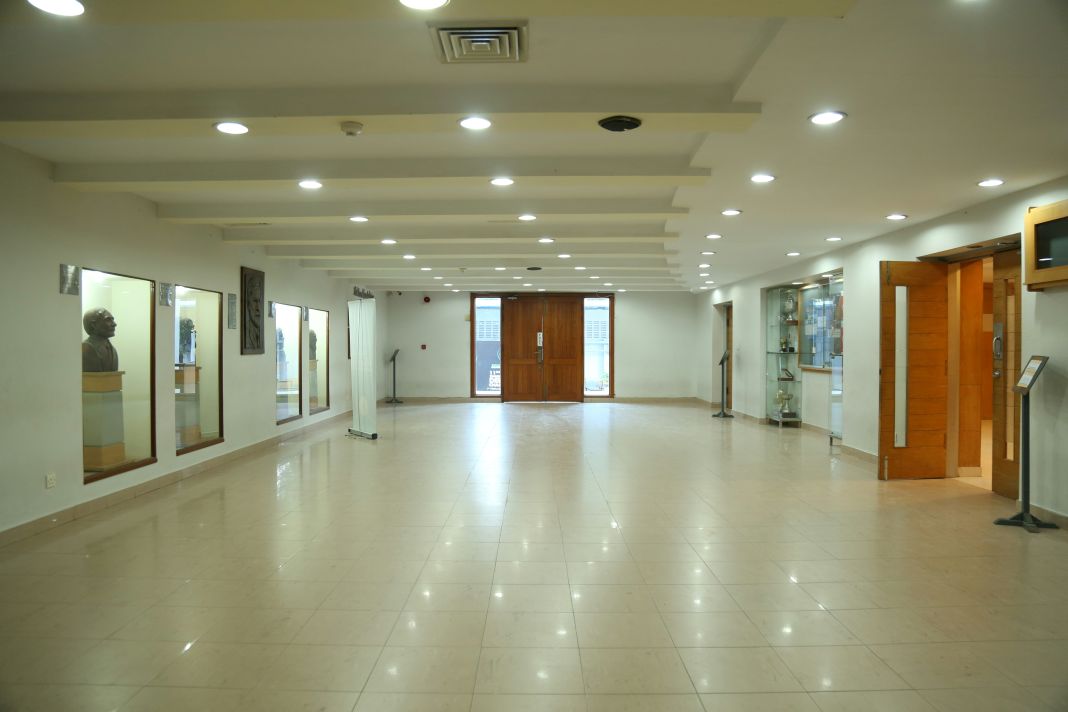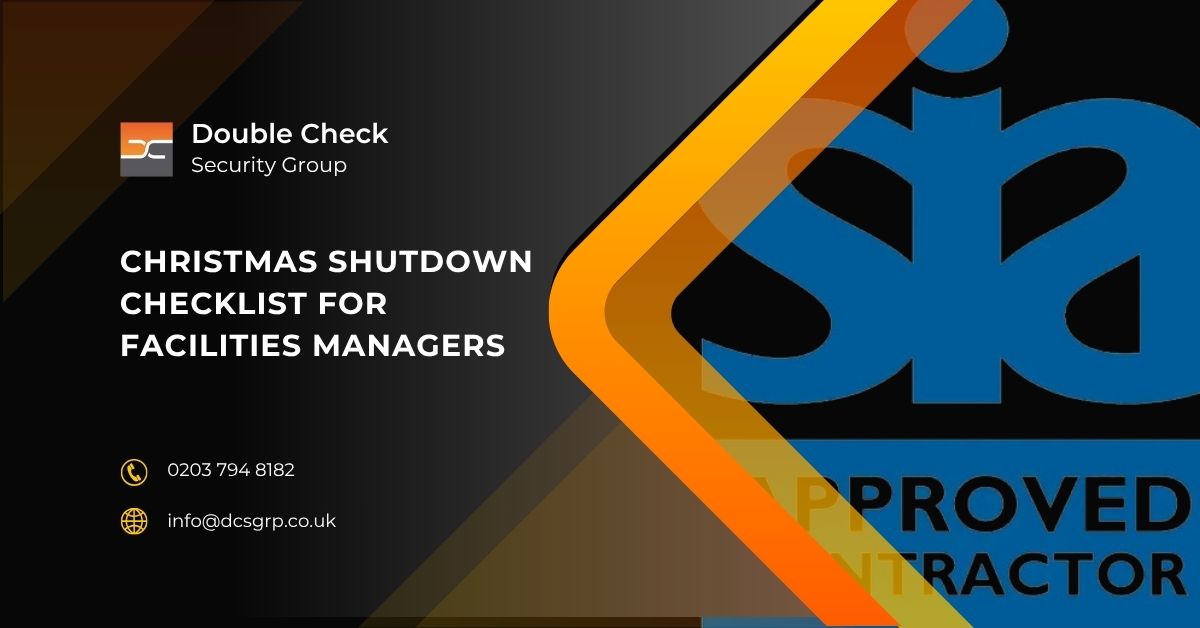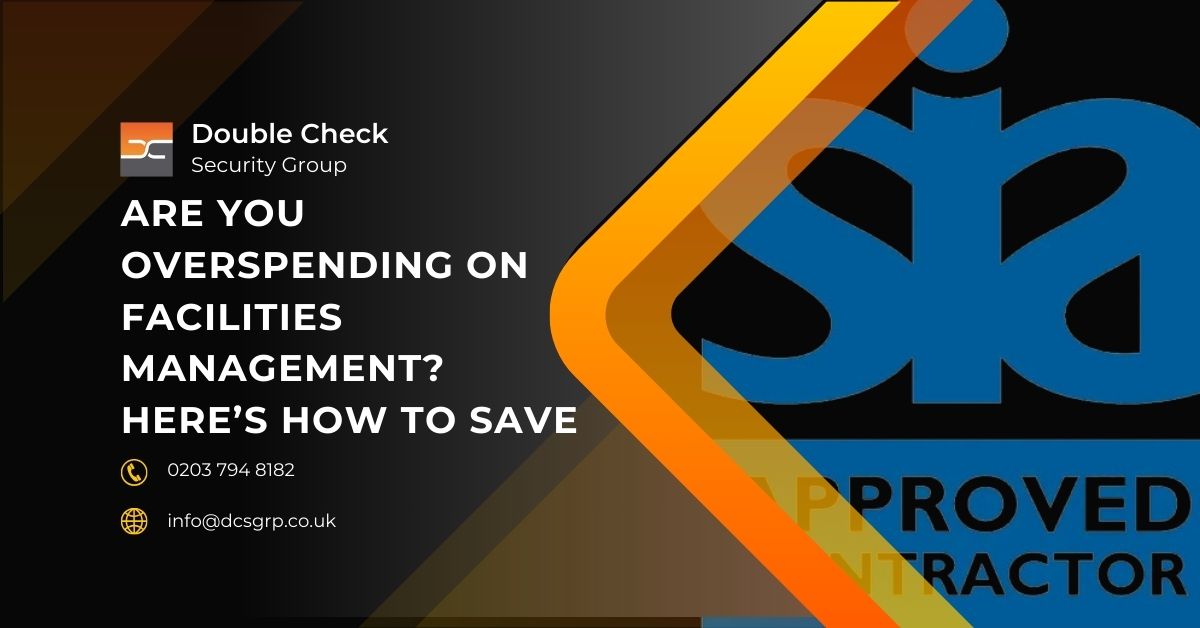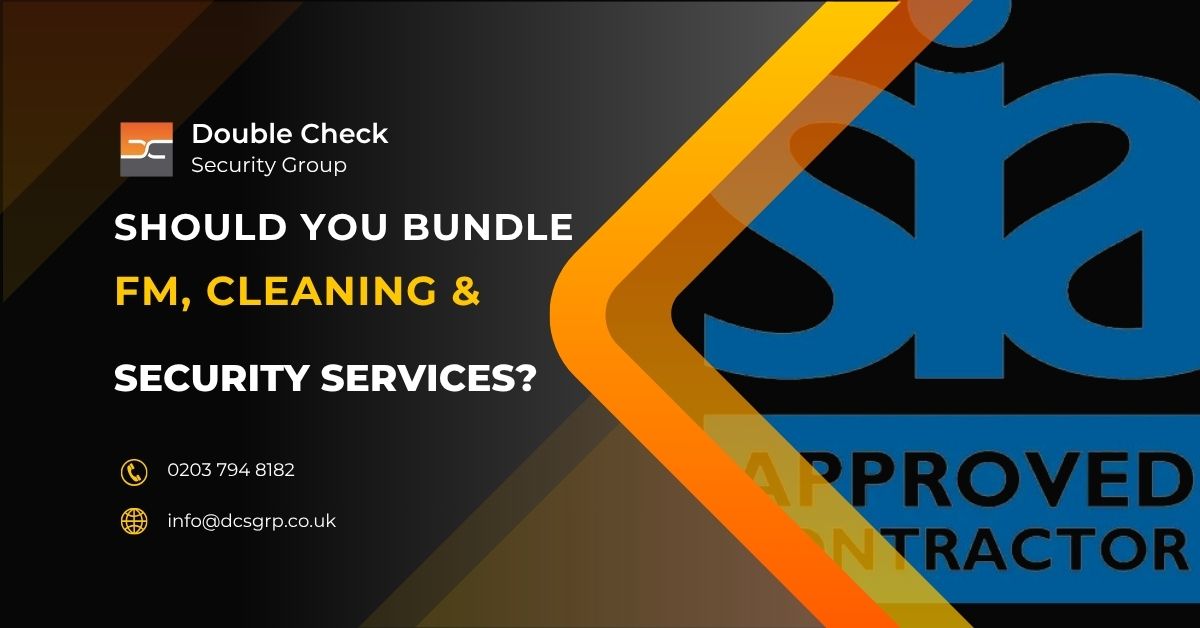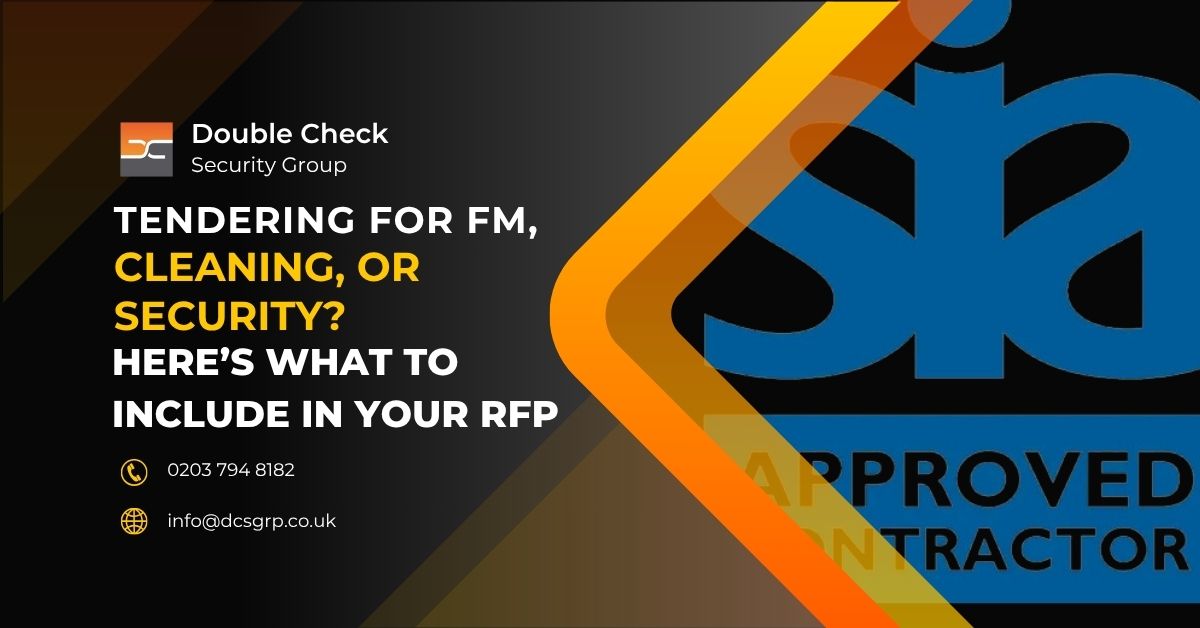Why every facilities manager needs this Christmas shutdown checklist
What are the risks of leaving your building unattended over Christmas?
When a site is left empty over the Christmas period, the risks increase: frozen pipes, power failures, flooding, fire and break ins are all more common in unattended buildings. Insurance claims can be rejected if protocols are not followed. This facilities shutdown checklist helps you avoid damage, maintain compliance and return in January with fewer headaches.
1. Understand the cost of skipping shutdown planning
Imagine this: it is 27 December, alarms have gone off in the early hours, but no one responds. A pipe has burst, and now the site is flooded, cold and inoperable. These situations are more common than expected.
Shutdown issues often come from poor assumptions. Some teams believe switching everything off is best, or they rely on outdated contact lists. UK insurers, such as Aviva, can decline claims when shutdown steps are not clearly documented.
A facilities checklist like this one supports downtime planning, risk mitigation and structured handover notes, helping teams head into January with peace of mind.
2. How do you organise your shutdown timeline
Break your building shutdown checklist into phases using a countdown approach:
-
T7: Notify staff, vendors and contractors
-
T5: Confirm permits, logins and access control
-
T3: Complete safety system checks and update signage
-
T1: Walkthrough, system handover and lock up
-
T+1: Gradual site reactivation and inspections
Use task sequencing tools or facilities management software to plan and assign responsibilities. Visual aids like Gantt charts help highlight milestone planning and prevent bottlenecks in holiday preparation.
What to cover in your T7 pre shutdown meeting
Hold a team planning session about a week before closure. Key actions include:
-
Assign shutdown leads
-
Confirm vendor availability
-
Check emergency contacts
-
Review heating and power requirements
-
Set test schedules for alarms
-
Plan walkthrough and signoff dates
Meeting early helps everyone know their responsibilities before tasks begin.
3. Who is on call and what are their responsibilities
Staff need to know who is covering which days and how to get in touch. Include:
-
A skeleton rota for basic cover
-
First and second level call out contacts
-
Notes for handovers, including key locations and access details
To make sure the plan works, simulate a real call out. Clear duties and quick contact reduce confusion. A good rota avoids missteps.
On call staff wellbeing matters too
Staff working over the holidays may feel isolated or stretched. Plan support by:
-
Arranging reachable backup
-
Rotating shifts where possible
-
Setting up short check in systems
-
Providing clear steps if they need help
Include lone working policies and clear duty scheduling to meet your health and safety obligations.
Pro Tip: Always test your emergency contact sheet before shutdown, not during an incident.
Need Help Preparing Your Site for Shutdown
Let our FM team handle your holiday prep with a custom handover plan.
4. Is your emergency contact sheet ready to use
It is not enough to have names and numbers. You also need to:
-
Make sure every number is accurate
-
Confirm everyone knows the escalation order
-
Ensure full coverage over the holidays
Try test messages or short calls. Post printed versions near exits. A tested emergency contact rota is reliable in real situations.
5. Have all your safety systems been tested
Each safety system needs checking before shutdown:
-
Burglar alarms and security cameras
-
Fire detection, extinguishers and emergency lighting
-
Entry systems including codes and cards
Record your results and check battery expiry. Alert your monitoring company in advance. This safety systems checklist ensures property compliance during the break. For alarm guidance, see BS 5839 Fire Detection and Fire Alarm Systems.
6. Are your heating systems prepped for cold weather
Frozen pipes are a common risk in empty buildings. Do not turn off the heating unless you have drained the system.
Instead, maintain a low background temperature. Use your building management system to monitor thermal cycles and heating shutdown control. Check insulation and vulnerable areas. This prevents costly frost damage. Learn more through CIBSE guidelines.
7. Have you shut down power safely
Power systems must be shut down safely, keeping essentials online:
-
IT servers and backup units
-
Equipment with temperature needs
-
Security systems
Check power loads, inspect surge protection and confirm your UPS system is ready. Proper circuit shutdown planning avoids outages and electrical faults. See NICEIC Electrical Safety Standards.
8. Have you prepped the building exterior for storms
Winter weather can create major problems. Check for:
-
Blocked gutters and drains
-
Loose or missing roof tiles
-
Faulty perimeter lights or fences
-
Icy areas that need grit bins
Walk the full exterior. These checks form a reliable winter maintenance routine and support your overall holiday maintenance checklist.
9. Are contractor permits and vendor access locked in
If any contractor needs access while the site is closed:
-
Make sure their permits are current
-
Share clear emergency contacts
-
Record every access point and override
Use a permit system or vendor tracking platform to stay compliant. Confirm your service level agreements and escalation paths as part of your contractor shutdown process.
Pro Tip: Never switch off heating fully unless all systems are drained and frost protected.
Emergency Cover You Can Count On
Ensure round the clock on call support this Christmas with trusted staff scheduling.
10. What should happen in the final walkthrough
Before the last team member leaves:
-
Go through the checklist again
-
Make sure all systems are ready or powered down
-
Lock up and confirm signoff
Give one person the job of final checks. It is the last step before a smooth shutdown. Use your lockout compliance checklist to confirm everything is in place.
11. What needs checking when you return
Start the new year with a methodical reentry:
-
Look for leaks, damage or signs of entry
-
Restart systems in stages
-
Test alarms, heating and networks
Your first hour back what to say check and confirm
-
Welcome staff and check logs
-
Hand out reopening checklists
-
Make sure heating and lighting are working
-
Walk high risk areas first
Include an occupancy readiness inspection and document your reactivation protocol. For reopening guidance, refer to ISO Facility Management Systems.
12. How do you improve next year’s shutdown
When everything is running again, review the process:
-
Note what went to plan
-
Record anything that failed
-
Suggest improvements for next year
Update audit trails and use findings to support continuous improvement in your facilities shutdown strategy.

